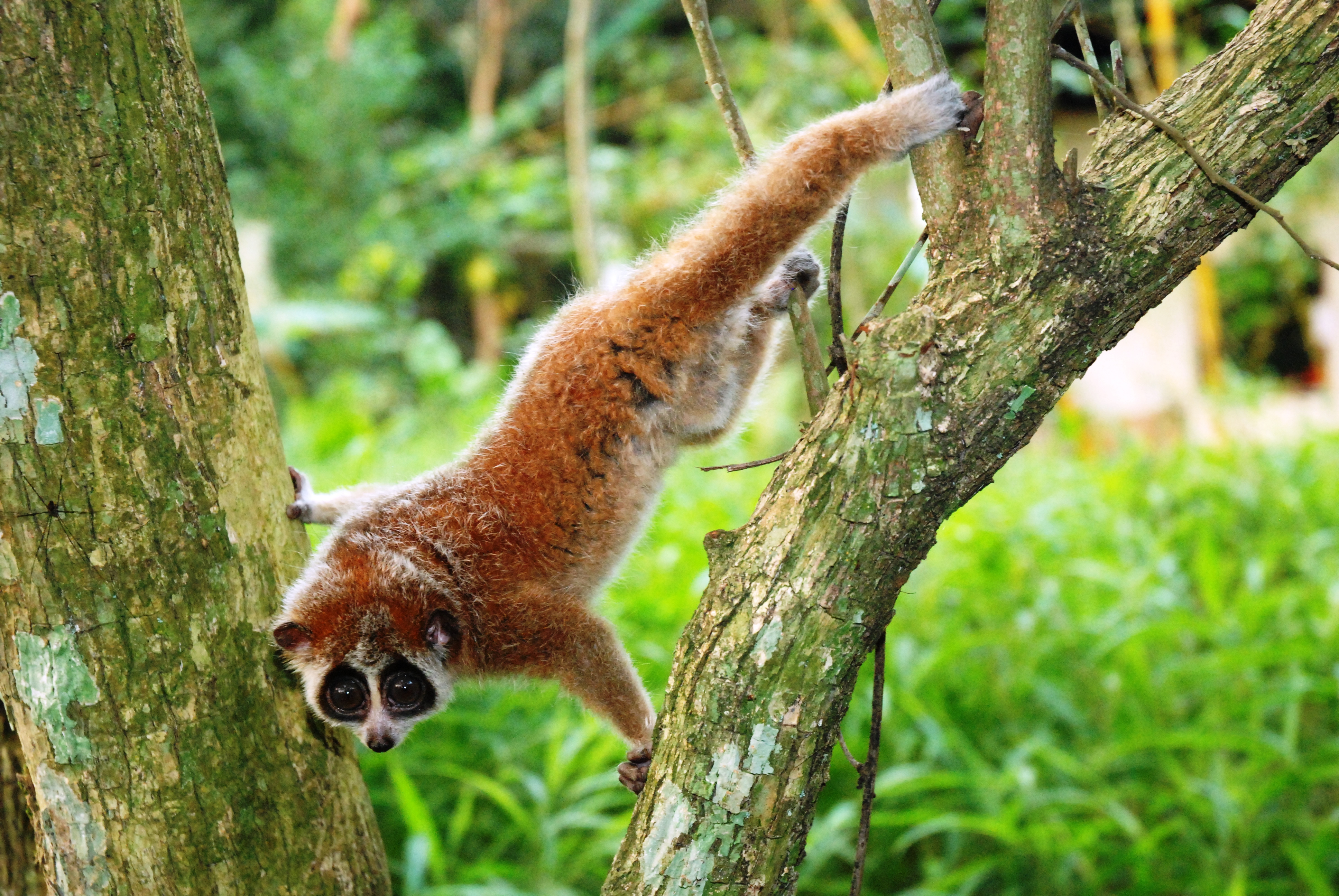Meet a Hibernating Primate: Vietnam's Slow Loris

Hibernation is well-documented in a number of animal species, and is common across the mammal family tree. In primates, however, it's almost unheard of. Until recently, the only primates known to hibernate were Madagascar lemurs. But scientists have found another primate that settles down for a seasonal snooze: the pygmy slow loris, native to Vietnam.
Researchers conducted the first-ever study of hibernation in pygmy slow lorises (Nycticebus pygmaeus), working with six adult animals at Vietnam's Endangered Primate Rescue Center. The researchers were looking for evidence such as reduced body temperature for extended periods of time, occurring in otherwise healthy animals. They built nesting boxes to mimic the tree holes that the lorises typically use for hibernating, and implanted the lorises with devices that logged their temperatures every 6 minutes for nearly a year.
During the cool, dry winter months, from late October until early April, the lorises exhibited behavior and physical responses consistent with animals that are known hibernators. They would repeatedly retreat to their nesting boxes and lapse into periods of inactivity that lasted up to 63 consecutive hours at a time, the researchers said. While in hibernation, their temperatures would dip to about 52 degrees Fahrenheit (11 degrees Celsius). [In Photos: Cute New Slow Loris Species]
The animals' bodies would also be stiff to the touch, said the study's corresponding author, Thomas Ruf, a physiologist with the University of Veterinary Medicine in Vienna.
Ruf told Live Science that he had suspected for some time that lorises hibernated, based on accounts dating back to the 1980s. Those reports described lorises curled up in trees, where they remained inactive for days. But without monitoring the animals over time, it was impossible to tell whether this was a sign of hibernation or of illness, Ruf added.
The data gathered by Ruf and his colleagues provided the first evidence that the lorises entered a state of inactivity and reduced metabolic rate in response to seasonal changes, the new study reported.
Sleeping to survive
Sign up for the Live Science daily newsletter now
Get the world’s most fascinating discoveries delivered straight to your inbox.
Hibernation is an effective survival strategy for animals living in parts of the world where changing seasons mean that food is less available for parts of the year. Pygmy slow lorises eat fruit and insects, and when winter rolls around, the insects become scarce. "That's why we think they hibernate — they have to save energy somehow," Ruf said.
Another benefit of hibernation is that the drop in body temperature means that animals' natural body odors are reduced, making the creatures harder for predators to detect, Ruf said. He recalled an experiment from decades ago that "you couldn't do these days," in which hibernating mice were placed in a room with hungry weasels. Because the mice were cold, motionless and stiff, the weasels weren't interested and left the potential prey alone.
Likewise, lorises hibernating in trees would be easy prey for snakes, but a cold, stiff, loris doesn't have much appeal to predators looking for a warm, lively dinner. "Hibernation is a very safe time for animals," Ruf told Live Science. "They have a very high survival probability."
Winter break
Small wonder, then, that so many animals hibernate. In mammals, hibernation appears in 11 different orders, which suggests the behavior originated far back in the ancestral time line of mammals. "It's unlikely that it evolved independently among so many genetic branches, " Ruf said. "So it must be really old."
It's possible that more hibernating species are yet to be discovered, even in the primate lineage, where hibernation is considered rare. Hibernating lemurs and the pygmy slow loris all belong to the same suborder, Strepsirrhini, and more species in that grouping could be hibernators, too, the researchers said.
"I suspect there are more primates that hibernate," Ruf added. "Now we have to go and look."
The findings were published online Dec. 3 in the journal Scientific Reports.
Follow Mindy Weisberger on Twitter and Google+. Follow us @livescience, Facebook & Google+. Original article on Live Science.

Mindy Weisberger is an editor at Scholastic and a former Live Science channel editor and senior writer. She has reported on general science, covering climate change, paleontology, biology and space. Mindy studied film at Columbia University; prior to Live Science she produced, wrote and directed media for the American Museum of Natural History in New York City. Her videos about dinosaurs, astrophysics, biodiversity and evolution appear in museums and science centers worldwide, earning awards such as the CINE Golden Eagle and the Communicator Award of Excellence. Her writing has also appeared in Scientific American, The Washington Post and How It Works Magazine. Her book "Rise of the Zombie Bugs: The Surprising Science of Parasitic Mind Control" will be published in spring 2025 by Johns Hopkins University Press.










